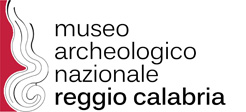Giovan Battista Mori and the reconstruction of Reggio after the earthquake of 1783
The slogan for 2018 European Year of Cultural Heritage is “Our heritage: where the past meets the future”. Christmas is an opportunity, at the MArRC, to retrace the common history of the territory, in order to build a more conscious future. On Thursday, December 20th, at 5.30 pm, in the Conference Room, the appointment is with the International Center of Writers of Calabria on the theme “Giovan Battista Mori and the reconstruction of Reggio after the earthquake of 1783”.
Pasquale Amato, professor at the University for Foreigners “Dante” Alighieri “and member of the Scientific Committee of the CIS, and the historic Germanist Francesca Paolino will speak for the History Cycle.
They will introduce: the director of the Museum Carmelo Malacrino and the president of CIS Loreley Rosita Borruto.
From February 5 to March 28, 1783, five terrible earthquake shocks devastated Messina and Calabria. The dead were tens of thousands. About two hundred cities, towns and villages were completely destroyed or severely devastated. In the night between 5 and 6 February a tsunami hit the two banks of the Strait.
“The Bourbon government was not limited to the emergency, but on the basis of the Enlightenment culture of which Naples was one of the main centers of elaboration and innovations, it moved according to a broad strategy”, Amato says. “On the one hand, the urban systems underwent a real revolution and, on the other, the first anti-seismic construction techniques were studied and the first juridical rules on the matter were launched”. In Reggio – the historian continues – “the protagonist of this strategic intervention was the engineer Giovan Battista Mori, who, supported by the Neapolitan government, drastically changed the urban layout totally transforming the face of the City. Its action was so incisive as to be confirmed in its essential cornerstones by the Master Plan of Pietro De Nava, after the earthquake of 1908 “.

